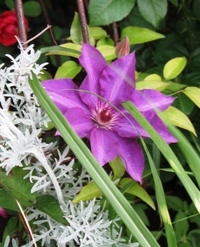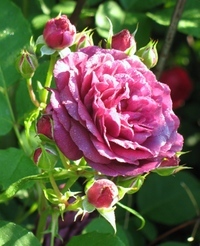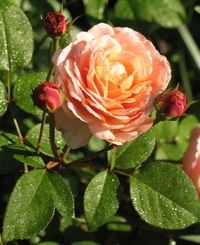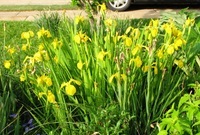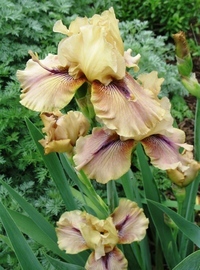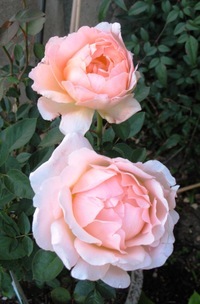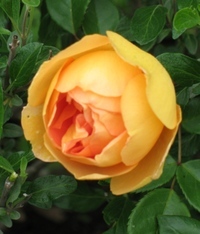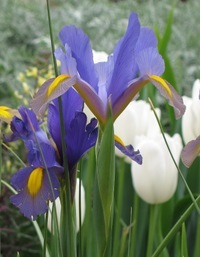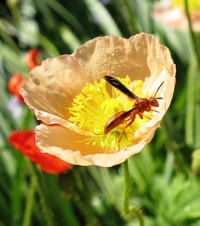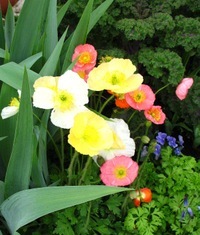Nice Buds
April 15, 2007
So a few more things have started to bloom. The first is my 'Ramona' Clematis. I had to plant a 'Ramona' in honor of my Chihuahua, Ramona, of course. Next is Rose 'Ebb Tide'. The photo doesn't do the color justice. It is the deepest purple rose I've seen, highly fragrant, and produces masses of buds. I got it as a test plant before it was released. Weeks roses released it in 2006, so it is new to the market. Another shot of 'Tamora' in bloom. Such a great fragrance. Rose 'Abraham Darby' just started blooming as well. Rose 'Cracklin' Fire' is a cute little miniature. It has that great orangey color I love. It's has a wee problem with blackspot in the spring- as you can see in the photo. But it usually grows out of it with no treatment once it warms up.
Now, as a horticulturist in Texas, I'm fully aware of the roses I'm "supposed" to be growing. Who do I think I am growing all these wimpy English hybrids??? Professionally I've done a lot of testing of rose varieties and contributed data to the Texas A&M EarthKind program. Of course I have antiques in my garden. I'm sure that within the next year or so 'Mutabilis' will be overtaking my front yard, and I'll be happy for it. But, I just have this weakness, stress WEAKNESS, for those big, fat, juicy David Austin beauties. And seriously, they are doing great for me. I maintain an organic garden and haven't touched a rose in my garden with a single treatment in 3 years. Occasionally, during times of high humidity and cool temperatures, foliage fungal diseases will crop up. I generally allow plants to outgrow their problems naturally.
